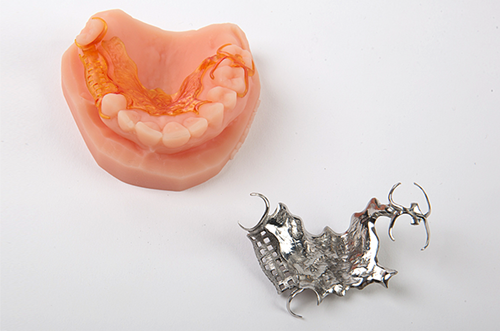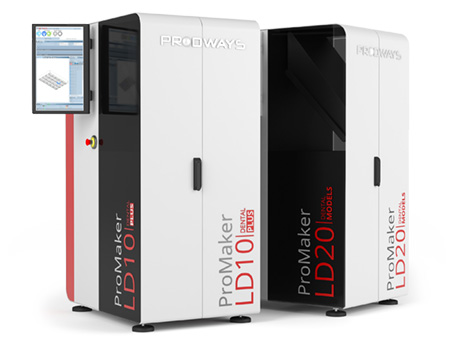IMPORTANT
La Hotline Prodways est réservée exclusivement à l’assistance technique des utilisateurs d’imprimantes Prodways ProMaker.
Vous avez besoin d’assistance technique sur votre imprimante ProMaker ?

While removable partial denture, bridge or crowns are commonly produced in ceramics or metal alloys, one of the main cost-efficient solutions turns to be the 3D printing of lost wax casting patterns.
The 3D printing of high resolution patterns allows the investment casting of removable partial denture, bridges or crowns in semi-precious metals.
High precision and excellent burn-out properties of 3D printing castable materials for direct metal investment casting or press able ceramics turns to be the more cost-efficient solution since it saves on dental expert time from manual wax modeling.
Additionally, the 3D printing ensures the repeatability of the design and a better adjustment of the removable partial denture, bridge or crowns.
Generally speaking, and this is valid for all the applications, the ROI of moving to digital dentistry can be summarized in
Production throughput and costs forecasts are important indexes to be evaluated when it comes to choose the right machine.
| Production time on a ProMaker LD10 Dental Plus 3D Printer | |
|---|---|
| Number of RPD / Stellites | 88 |
| Material used | PLASTCure Cast 300 HD |
| Total time @50μm LT (hours) | 9h 40min |
| Time per part (@50µm) | 6min 35sec |
| Cost per RPD / Stellite | 0.54 € |
| Full platform material cost | 47.40 € |
| Dentist | Lab | Dentist | ||
|
1
Get the scan of the patient mouth using an Intraoral 3D scanner like 3Shape Trios scanner *
|
2
On the scanned dental model, using dedicated CAD software, it’s easy and fast to design RPDs, bridges or crowns. **
|
3
Digitally place the 3D geometries on the build platform of the machine.
Automatic creation of the necessary supports as substructure to hold the geometries and avoid deformations. |
4
On the machine, choose the material and right configuration, load the geometries in STL format and print the models
|
5
Starting from the printed parts, the dentist or technician can move forward with the casting of the final product using the traditional methods, but with the advantage of having a size-perfect part that will perfectly fit the patient’s mouth.
|
Note: A second possible workflow is based on the use of the 3D scan of an alginate mold created with traditional methods as alternative to the direct intraoral 3D scan.
Prodways ProMaker LD and L series’ machine profiles and workspaces are available on all the most advanced software for dental application on the market.

Liquid resins for MOVINGLight® printers